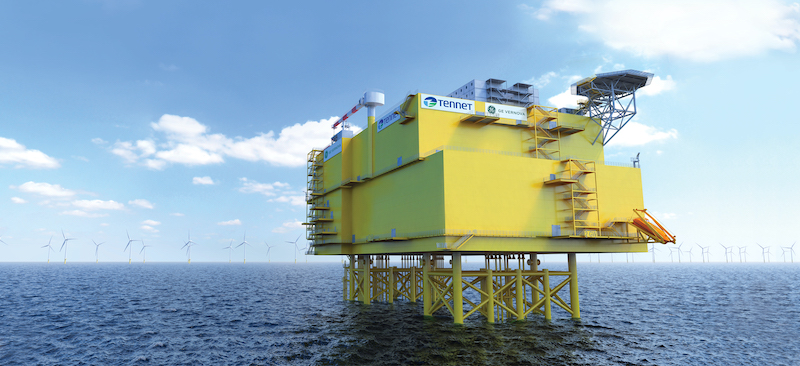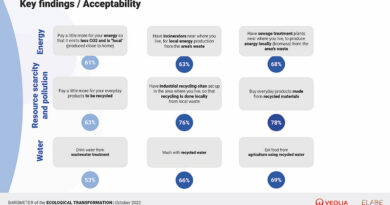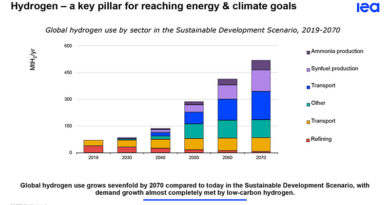
Power Generation Autonomy and Grid Resiliency Hold Key to EU Energy Security
The European Union cannot achieve its full potential either economically or strategically without energy security.
Energy is fundamental to our lives and businesses. Any disruption to our energy supply whether from weather, external geopolitical forces, cyber-attack or supply chain dysfunction could cause far-reaching, unrecoverable damage. At the same time, demand for electricity is growing as data centers come online and heavy industry electrifies to decarbonize.
Creating energy security requires that we focus on several key elements: power generation autonomy, grid resiliency and stability, a secure supply chain, and affordability.
Russia’s invasion of Ukraine in 2022 put on display the vulnerabilities of European energy generation. In 2022, underwater saboteurs bombed the Nord Stream pipeline, which carried gas from Russia to Germany. At the start of 2025, with the Russia-Ukraine conflict ongoing, Ukraine ended an agreement that allowed Russian natural gas to transit through Ukraine via the Urengoy-Pomary-Uzhgorod pipeline to the rest of Europe. While Europe enjoyed this cheap and abundant energy flow for decades, it made us dependent.
At the time the war began, Europe produced just 37% of the energy it consumed and the EU’s main supplier of oil, petroleum products, natural gas and solid fossil fuels in 2022 was Russia. To avoid catastrophe, Europe deployed renewables and accelerated electrification.
The push to generate and deploy wind and solar power to compensate for the halt in the flow of Russian energy revealed a second area of weakness in Europe’s aging and technologically dated power grid.
As reliance on renewable energy and electrification grows, the grid is struggling to keep pace, causing congestion and delays. Generated renewable energy is lost every day because the grid does not have the capacity or technology to integrate it. Data centers, which consume large amounts of electricity, cannot get the grid hook ups they desperately need. Increasingly, extreme weather events overtax the grid, causing brownouts and blackouts. Old grid technology, lacking modern threat detection systems, is vulnerable to cyber-attack.
Moreover, the Ukrainian-Russian conflict demonstrated the mission-criticality of power grids in terms of security of power supply and, therefore, national security. Since 2022, Ukrainian infrastructure and institutions have experienced approximately 2,500 cyberattacks per year, surging 70% to 4,350 cyberattacks in 2024 according to the Computer Emergency Response Team for Ukraine (CERT-UA). More than half of these missile and drone cyberattacks targeted the Ukrainian electrical grid. During the 2022-2023 period, approximately half of Ukraine’s grid substations were destroyed or severely damaged. In 2024, more than 200 grid substations were destroyed, while only a dozen power generation sites, were under attack demonstrating the strategic importance of the electrical network infrastructure. Indeed, the electrical network is the foundation of all mission-critical infrastructure, including water treatment, telecommunications, and military command and control systems. Therefore, the power grid resiliency is of vital importance for energy and national security.
To create grid resiliency, Europe must right-size the grid to account for existing and future electrification, as well as stockpile necessary buffer stocks of spares in case of major crisis, such as conflicts, natural calamities, and supply chain disruption.
That means expanding, modernizing and upgrading existing infrastructure to weed out obsolete technology while also weaving in cyber security to protect the grid and digitalization to manage it. But Europe also must build new infrastructure to account for the many ways we generate energy.
Power generation is increasingly complex. Where once a centralized plant generated energy that radiated outward to customers, now our energy sources are distributed from offshore wind to solar panels to nuclear and more. They can be intermittent and variable as well as firm. And where once power flowed in only one direction from the central generator to the user, now it is bidirectional with consumer/producers pushing power back onto the grid. Digitalization — grid automation equipment, associated telecom solutions and network orchestration software – is essential for managing a decentralized, multi-directional grid, and energy storage allows us to overcome the intermittency issues inherent in renewable energy.
A third area of vulnerability is the security of the supply chain. For example, High Voltage Direct Current projects take seven to nine years from design to execution. Any geopolitical disruption of the supply chain that causes an escalation of prices or unavailability of key materials can delay or even halt the construction of essential infrastructure and impact the EU operational readiness.
The EU can take steps now to overcome these weaknesses while also bolstering European energy systems against future threats and uncertainties. The grid must be the cornerstone of these efforts.
Throughout Europe, countries alone and in partnership are taking big steps to localize energy generation. Wind produced more electricity in the EU than gas for the first time in 2023. In 2024, transmission system operator (TSO) TenneT transmitted about 20.8 terawatt hours of wind energy from the German North Sea to land, generating enough electricity to meet the power needs of 6.5 million households. More renewable power will come online in 2025.
Yet all this generation will come to nought if Europe’s transmission systems do not make the substantial investments to upgrade, expand and digitalize the grid to relieve the grid congestion that limits our ability to fully deploy low-carbon energy sources, take advantage of local generation and reduce our dependence on outside energy sources.
The EU can accelerate this transition with a combination of investment incentives, policy changes and a broadening of its focus beyond energy generation to a whole system approach.
First, securing capital investment in grid expansion and modernization is a fundamental challenge due to the very significant financial needs. According to IEA, worldwide grid investments will equal the clean energy generation investment until 2030, culminating in $0.6 to $0.7 trillion per year. The EU can facilitate investment into electricity system technologies, such as bulk power transmission and interconnection links, grid digitalization and energy storage, by setting the right conditions with long-term grid planning and well-defined deployment timing.
Such investments will also require market reform. As the energy system is becoming more decentralized, we need better integration of local, regional, and national markets in Europe, which will ultimately create better cost efficiency as well as strengthen security.
Second, grid deployment is slowed by an onerous permitting process and remuneration issues. The EU could tackle these issues by creating a planning and legal framework that helps remove these roadblocks. Speed is essential for European industry to remain competitive as it electrifies and decarbonizes. As the International Energy Agency notes, the average time to deploy a transmission line in China is two years versus eight to 10 years in the EU. Additionally, the EU should take steps to protect its intellectual property for grid technologies.
Third, the EU can take steps to encourage the onshoring or near-shoring of systems, equipment and materials essential to the building and maintenance of our energy infrastructure. The recent geopolitical turmoil and the current commercial tensions advocate for a multi-continental or regional globalization of grid supply chains.
Finally, different countries within the EU bring different things to the energy picture whether its North Sea wind from Germany or solar energy from Spain.
To take full advantage of Europe’s homegrown energy generation, we need widespread cooperation among regulators and regulatory schemes, utility operators, TSOs and governments to create a borderless super-grid that would enable high volumes of electricity to cross the continent.
These investments will impose direct and indirect costs on countries and consumers in the short term, but over the medium-and-long term, ratepayers will win as increasing electrification and decreasing renewables cost will drop rates. Today, onshore wind and solar photovoltaic energy are cheaper than new fossil fuel plants almost everywhere. The average cost of variable renewable energy generation is expected to drop further.
Investments in grid infrastructure will ultimately pay off in lower energy bills for consumers and industry while protecting the EU from external disruptions to its energy supply. New grid infrastructure is essential if Europe wants to future-proof its energy sector. The grid of the future is foundational to our collective energy security.




